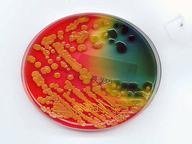Quiz Answer Key and Fun Facts
1. What was the first virus ever discovered?
2. Which of the following cannot be the structure of the genes of a virus?
3. What type of molecule is the capsid surrounding the virus made of?
4. What is the reproductive cycle of a phage virus called in which the virus's DNA is combined with the host cell's DNA to form a prophage?
5. Retroviruses are equipped with which enzyme, that allows them to transcribe DNA from an RNA template?
6. What are the tiny molecules of naked circular RNA that infect plants called?
7. What is the major component of the bacterial genome?
8. How do bacterial cells divide and reproduce?
9. True or False: Bacterial cells undergo genetic recombination.
10. What is the direct transfer of genetic material between two bacterial cells that are temporarily joined?
Source: Author
danreil
This quiz was reviewed by FunTrivia editor
crisw before going online.
Any errors found in FunTrivia content are routinely corrected through our feedback system.

